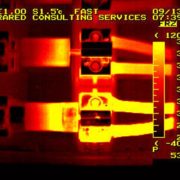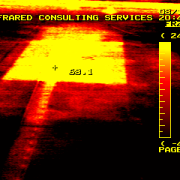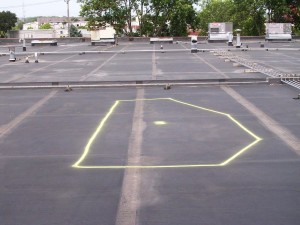Extending the Life of a Low Slope Flat Roof
The old phrase of being “out of sight, out of mind” is especially true when it comes to a commercial roof. Most people don’t walk on the roof of a building every day, so it can be easy to forget about. This could be problematic after years of neglect, since a roof can be extremely expensive to repair or replace at a certain point.
Extending the life of a low slope flat roof isn’t too difficult as long as you take small steps to protect it. Using IR thermography to help identify any issues is critical in preventing roof leaks and other issues is beneficial. Here are some of the best ways you can help extend the life of your low slope flat roof.
Drainage System Maintenance
Since flat roofs don’t have much of a slope for water to run off of, you have to make sure the drainage systems are properly maintained. Standing water on a roof is a recipe for disaster, as it could cause the materials to break down and cause leaks. Most of the time, you don’t even need a thermal imaging inspection to identify when a drain outlet is clogged. Just pass by them and remove any debris regularly so they work properly when needed.
Address Issues Immediately
You don’t always have to be on the roof or use infrared detection technology to detect a roof problem. If you notice water stains on the ceiling or drips coming from a place in the building where it shouldn’t be dripping, it’s a sure sign of a roof leak. Don’t just ignore these signs. Many times, the issue can be easily fixed if detected early enough.
Re-Surface an Old Roof
If you have an older roof, you could consider re-surfacing it to extend the life. Low slope flat roofs aren’t as forgiving as steep slope roofs, so they may require a new surface after 10-15 years. Applying a new surface could extend the life another 10-15 years or more and reduce the amount of maintenance on it during that time as a result. If your roof is having constant leaking issues, this is one of the best options to consider for a long-term roof life.
Conduct Regular and Frequent Inspections
Above all else, conducting a regular thermal imaging inspection is the best way to extend the life of your roof. Many times, infrared detection technology can identify an issue in a low slope flat roof before it actually becomes a visible problem. This provides business owners with a more cost-effective way to repair the roof, since there’s usually no damage done. Conducting an IR thermography inspection a few times each year will greatly extend the life of your roof.
At Infrared Consulting Services, we’ve helped many businesses extend the life of their low slope flat roof by offering the best infrared testing in the industry. If it’s been a while since you’ve evaluated your roof, or if you want to put a maintenance plan together for it, be sure to contact us at any time.








 By detecting problems before they occur and by pin-pointing exactly where problems might exist, Infrared Thermographic Testing has many benefits.
By detecting problems before they occur and by pin-pointing exactly where problems might exist, Infrared Thermographic Testing has many benefits.
 Learn more about our wide range of non-invasive, non-destructive inspection & testing services and if they are right for your needs.
Learn more about our wide range of non-invasive, non-destructive inspection & testing services and if they are right for your needs.
 Founded in 1988, Infrared Consulting Services (ICS) provides professional infrared electrical, NDT and building envelope inspection services nationwide.
Founded in 1988, Infrared Consulting Services (ICS) provides professional infrared electrical, NDT and building envelope inspection services nationwide.